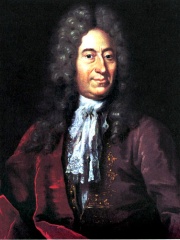
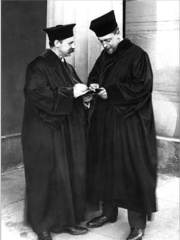

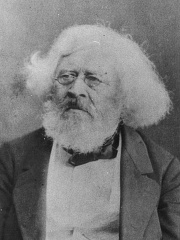


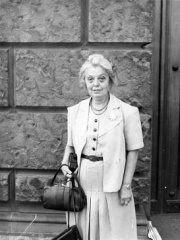
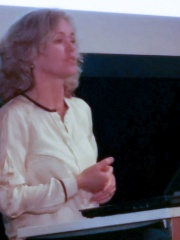
The Most Famous
ASTRONOMERS from Denmark
This page contains a list of the greatest Danish Astronomers. The pantheon dataset contains 644 Astronomers, 10 of which were born in Denmark. This makes Denmark the birth place of the 13th most number of Astronomers behind Czechia, and Switzerland.
Top 10
The following people are considered by Pantheon to be the top 10 most legendary Danish Astronomers of all time. This list of famous Danish Astronomers is sorted by HPI (Historical Popularity Index), a metric that aggregates information on a biography's online popularity. Visit the rankings page to view the entire list of Danish Astronomers.

1. Ole Rømer (1644 - 1710)
With an HPI of 77.72, Ole Rømer is the most famous Danish Astronomer. His biography has been translated into 75 different languages on wikipedia.
Ole Christensen Rømer (Danish: [ˈoːlə ˈʁœˀmɐ]; 25 September 1644 – 19 September 1710) was a Danish astronomer who, in 1676, first demonstrated that light travels at a finite speed. Rømer also invented the modern thermometer showing the temperature between two fixed points, namely the points at which water boils and freezes. Rømer made his discovery regarding the speed of light while working at the Royal Observatory in Paris and studying Jupiter's moon Io. He estimated that light takes about 11 minutes to travel from the Sun to Earth. Using today's knowledge of the Sun-Earth distance, this would amount to a speed of light of approximately 220,000 kilometers per second, compared to today's accepted value of just under 300,000 kilometers per second. In scientific literature, alternative spellings such as "Roemer", "Römer", or "Romer" are common.

2. Ejnar Hertzsprung (1873 - 1967)
With an HPI of 69.98, Ejnar Hertzsprung is the 2nd most famous Danish Astronomer. His biography has been translated into 48 different languages.
Ejnar Hertzsprung (Danish: [ˈɑjnɐ ˈhɛɐ̯tsˌpʁɔŋ]; 8 October 1873 – 21 October 1967) was a Danish chemist and astronomer. He is best remembered for his role in developing the Hertzsprung–Russell diagram of stars.

3. John Louis Emil Dreyer (1852 - 1926)
With an HPI of 67.78, John Louis Emil Dreyer is the 3rd most famous Danish Astronomer. His biography has been translated into 40 different languages.
John Louis Emil Dreyer (13 February 1852 – 14 September 1926), also Johan Ludvig Emil Dreyer, was a Danish astronomer who spent most of his career working in Ireland. He spent the last decade of his life in Oxford, England.

4. Peter Andreas Hansen (1795 - 1874)
With an HPI of 62.71, Peter Andreas Hansen is the 4th most famous Danish Astronomer. His biography has been translated into 25 different languages.
Peter Andreas Hansen (born 8 December 1795, Tønder, Schleswig, Denmark; died 28 March 1874, Gotha, Thuringia, Germany) was a Danish-born German astronomer.
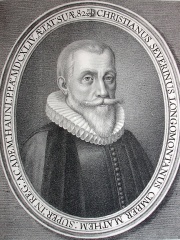
5. Christen Sørensen Longomontanus (1562 - 1647)
With an HPI of 61.40, Christen Sørensen Longomontanus is the 5th most famous Danish Astronomer. His biography has been translated into 19 different languages.
Christen Sørensen Longomontanus (also as Longberg or Severin) (4 October 1562 – 8 October 1647) was a Danish astronomer. The name Longomontanus was a Latinized form of the name of the village of Lomborg, Jutland, Denmark, where he was born. His father, a laborer called Søren, or Severin, died when Christen was eight years old. An uncle took charge of the child, and had him educated at Lemvig; but after three years sent him back to his mother, who needed his help to work the fields. She agreed that he could study during the winter months with the clergyman of the parish; this arrangement continued until 1577, when the ill-will of some of his relatives and his own desire for knowledge caused him to run away to Viborg. There he attended the grammar school, working as a labourer to pay his expenses, and in 1588 went to Copenhagen with a high reputation for learning and ability. Engaged by Tycho Brahe in 1589 as his assistant in his great astronomical observatory of Uraniborg, he rendered invaluable service for eight years. He held Tycho Brahe in the highest regard and always supported his system and tried to improve upon it throughout his life. However, he did disagree with the Tycho Brahe's system in some regards, he believed that the earth rotated unlike his master's theory that it was immobile. During this time, Kepler joined the two in trying to come up with a theory on how to predict longitude at oppositions with complete accuracy. Longomontanus used Mars as a model for this. Having left the island of Hven with his master, he obtained his discharge at Copenhagen on 1 June 1597, in order to study at some German universities. He rejoined Tycho at Prague in January 1600, and having completed the Tychonic lunar theory, turned homeward again in August. Soon after this, Tycho Brahe's untimely demise happened. After Tycho managed to become a mathematician that served the Emperor Rudolph II, he died in October 1601. The Emperor had to appoint a new Mathematician. When doing so, the expected choice would have been Longomontanus since he was Tycho's preferred choice. However, Longomontanus was gone during this time in Denmark and Johannes Kepler was there, so he was anointed. He visited Frauenburg, where Copernicus had made his observations, took a master's degree at Rostock, and at Copenhagen found a patron in Christian Friis, chancellor of Denmark, who employed him in his household. Appointed in 1603 rector of the school of Viborg, he was elected two years later to a professorship in the University of Copenhagen, and his promotion to the chair of mathematics ensued in 1607. This post was held by Longomontanus till his death in 1647. He adhered to Tycho's erroneous views about refraction, believed that comets were messengers of evil, and imagined that he had squared the circle. He found that the circle whose diameter is 43 has for its circumference the square root of 18252 which gives 3.14185... for the value of π. John Pell and others tried in vain to convince him of his error. In 1632 he started the construction of the Rundetårn (a stately astronomical tower in Copenhagen), but did not live to witness its completion. King Christian IV of Denmark, to whom he dedicated his Astronomia Danica, an exposition of the Tychonic system of the universe, conferred upon him the canonry of Lunden in Schleswig. Longomontanus's major contribution to science was to develop Tycho's geoheliocentric model of the universe empirically and publicly to common acceptance. When Tycho died in 1601, his program for the restoration of astronomy was unfinished. The observational aspects were complete, but two important tasks remained, namely the selection and integration of the data into accounts of the motions of the planets, and the presentation of the results on the entire program in the form of a systematic treatise. Longomontanus assumed the responsibility and fulfilled both tasks in his voluminous Astronomia Danica (1622). Regarded as the testament of Tycho, the work was eagerly received in seventeenth-century astronomical literature. The book was highly accredited and many famous owners included Christopher Wren, Christiaan Huygens as well as the Royal Greenwich Observatory in England. The book mainly compared the three world systems of the time, these included the Copernican, Tycho Brahe and Ptolemy schools of thought. But unlike Tycho's, the geoheliocentric model of Longomontanus gave the Earth a proper daily rotation which he kept from the Copernican model. (as in the models of Ursus and Roslin. Longomontanus in Astronomia Danica points out that Ursus' model wrongly has the orbit of Mars fully encircling the Sun's, which he copied from a crude drawing he had once seen at Tycho's mural wall.). It is therefore sometimes called the 'semi-Tychonic' system. The book was reprinted in 1640 and 1663, which indicates its popularity and the interest in the semi-Tychonic system in this period. Having originally worked on calculating the Martian orbit for Tycho with Kepler, he had already modelled its orbit in his geoheliocentric model to an error in longitude of under 2 arcminutes when Kepler had still only achieved 8 arcminutes error in his heliocentric system, as he had not yet used elliptical orbits. Some historians claim Kepler's 1627 Rudolphine Tables, based on Tycho Brahe's observations, were more accurate than any previous tables. But nobody has ever demonstrated they were more accurate than Longomontanus's 1622 Danish Astronomy tables, also based upon Tycho's observations.

6. Richard Martin West (b. 1941)
With an HPI of 60.69, Richard Martin West is the 6th most famous Danish Astronomer. His biography has been translated into 23 different languages.
Richard Martin West (born 1941) is a Danish astronomer and discoverer of astronomical objects with a long career at the European Southern Observatory (ESO) and at the International Astronomical Union (IAU). He discovered numerous comets, including Comet West (C/1975 V1), which was one of the brightest comets of the 1970s, and the periodic comets 76P/West–Kohoutek–Ikemura and 123P/West–Hartley. He is also credited by the Minor Planet Center with the discovery of 40 minor planets between 1976 and 1986, including 2146 Stentor and 2148 Epeios, two Trojan asteroids. Together with Hans-Emil Schuster, he co-discovered the Phoenix Dwarf galaxy.

7. Holger Thiele (1878 - 1946)
With an HPI of 56.89, Holger Thiele is the 7th most famous Danish Astronomer. His biography has been translated into 17 different languages.
Holger Thiele (September 25, 1878 – June 5, 1946) was a Danish American astronomer and discoverer of minor planets and comets. He was the son of Thorvald Nicolai Thiele (1838–1910), the noted Danish astronomer, actuary and mathematician, after whom the main-belt asteroid 1586 Thiele is named. Holger Thiele is credited by the Minor Planet Center with the discovery of 4 numbered asteroids during 1914–1916. He also discovered the comet C/1906 V1 and calculated the orbits of other comets. He worked at Hamburg-Bergedorf Observatory at Bergedorf, in Hamburg, Germany. In 1912, he immigrated to the United States. In 1917, he started working as a fellow for the University of California at Lick Observatory, near San Jose, California. Holger Thiele died in Alameda County in 1946.

8. Julie Vinter Hansen (1890 - 1960)
With an HPI of 55.30, Julie Vinter Hansen is the 8th most famous Danish Astronomer. Her biography has been translated into 22 different languages.
Julie Marie Vinter Hansen (20 July 1890 – 27 July 1960) was a Danish astronomer. She is the first woman to be obtain a scientific degree in astronomy in Denmark.

9. Anja Cetti Andersen (b. 1965)
With an HPI of 45.58, Anja Cetti Andersen is the 9th most famous Danish Astronomer. Her biography has been translated into 22 different languages.
Anja Cetti Andersen (born 25 September 1965) is an astronomer and astrophysicist from Hørsholm, Denmark.

10. Poul Jensen (b. 2000)
With an HPI of 28.33, Poul Jensen is the 10th most famous Danish Astronomer. His biography has been translated into 15 different languages.
Poul B. Jensen is a Danish astronomer and a discoverer of 98 minor planets while working at Brorfelde Observatory. Between 1967 and 1969 he assisted in positional observations with the observatory's 7" transit circle. He is also a co-discoverer (with Carolyn S. Shoemaker) of the Comet Jensen-Shoemaker (1987g1). As of 2004, he was still publishing in the Minor Planet Circulars. On 22 July 1994, the main-belt asteroid 5900 Jensen was named by his colleges Karl Augustesen and Hans Jørn Fogh Olsen in his and his wife's honor (M.P.C. 23793).
People
Pantheon has 10 people classified as Danish astronomers born between 1562 and 2000. Of these 10, 3 (30.00%) of them are still alive today. The most famous living Danish astronomers include Richard Martin West, Anja Cetti Andersen, and Poul Jensen. The most famous deceased Danish astronomers include Ole Rømer, Ejnar Hertzsprung, and John Louis Emil Dreyer. As of April 2024, 1 new Danish astronomers have been added to Pantheon including Poul Jensen.
Living Danish Astronomers
Go to all RankingsRichard Martin West
1941 - Present
HPI: 60.69
Anja Cetti Andersen
1965 - Present
HPI: 45.58
Poul Jensen
2000 - Present
HPI: 28.33
Deceased Danish Astronomers
Go to all RankingsOle Rømer
1644 - 1710
HPI: 77.72
Ejnar Hertzsprung
1873 - 1967
HPI: 69.98
John Louis Emil Dreyer
1852 - 1926
HPI: 67.78
Peter Andreas Hansen
1795 - 1874
HPI: 62.71
Christen Sørensen Longomontanus
1562 - 1647
HPI: 61.40
Holger Thiele
1878 - 1946
HPI: 56.89
Julie Vinter Hansen
1890 - 1960
HPI: 55.30
Newly Added Danish Astronomers (2025)
Go to all RankingsOverlapping Lives
Which Astronomers were alive at the same time? This visualization shows the lifespans of the 5 most globally memorable Astronomers since 1700.

